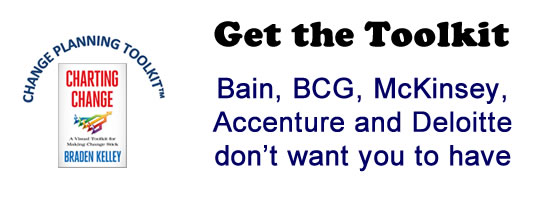Creating cooperation & belonging: Are you living up to your promise?

As I travel the world helping businesses to create communities of cooperation and innovation I sometimes wonder why we have not been able to solve the world’s Big Hairy Audacious problems together. We potentially have the knowledge, the resources and the technology to do so, but hunger, overpopulation, poverty and pollution are still on the rise. As Peter Block says in his book Community, we have not lived up to our promise of abundance, equality and sustainability. This comes with the knowledge that each of us, including myself, are participating in creating this world daily. I believe that if we  can create a culture of community and cooperation, we could fulfill our promise.
Why is cooperation important?
In a volatile and complex environment accelerating time to market is essential. To do this alone is unrealistic. More and more companies are moving towards creating communities, enabling cooperation and increasing the sense of belonging in order to become more innovative. To solve the world’s BHA problems we as individuals, nonprofits, small businesses, large corporations, groups and associations need to do the same. If we want to maintain our innovation and cooperation I would argue we all have to start thinking differently. We need to develop interdependence, build trust and base decisions on morality. We can not afford inward looking, competitiveness based on privileged ranks. We need everyone, and every perspective to develop and innovate.

How do you ‘create’ community? Isn’t it something that just happens?
Knowledge of individual transformation is not enough when it comes to transforming a community. My sources of inspiration are therefore to be found in systemic thinkers and community builders like Eric Berne on the Structure And Dynamics Of Groups And Organizations, Peter Block’s book Community, Robert Putnam’s Bowling Alone and John Gottman’s The Science of Trust.
The structure of community
At the structural level a community is a social aggregation held by: Boundaries, Roles and Hierarchy. These define the distribution of decision making power.
We looked in more detail at the structure of a community in a business at:Â Team agility and business innovation: Agile boundary paradoxes
The overriding concern of every healthy organization is to survive, grow and innovate. To be able to stay healthy all of us must find a way to deal with three core interdependencies:
- Corporate identity – evolving market
- Leadership control – delegation to membership
- Individual independence – relational interdependence
Relationship of Trust
In Bowling Alone, Robert Putman, shows that geography, history, great leadership and economic advantage only make a marginal difference to the health of a community. A community’s well-being has to do with the quality of relationship, where people trust their safety and success depends on the safety and success of all others. Like the Boddhisatva belief that not one of us can enter Nirvana until all others have gone before us. Trust is the intention to accept vulnerability based on the positive expectations or beliefs regarding the intentions of others. Gottman goes further and says it is a specific state that exists when both are willing to change their behavior to benefit the other.
Building trust and cooperation
One of the most researched cooperation games is called: The Prisoner’s Dilemma. The game allows players to achieve mutual gains from cooperation, but it also allows them to exploit or not cooperate. In his book The Evolution of Cooperation, Robert Axelrod found that the best strategy was ‘Tit for Tat’.
- Cooperate first – never be the first to defect.
- Be nice – avoid defection as long as the other player cooperates.
- Reciprocity – retaliate immediately with defection if the other player defects.
- Forgiveness – after the other player reverts to cooperation cooperate immediately. Minimize the echo effects.
- Clarity – be absolutely transparent about what you are doing and why you are doing it so others can learn.
Does this sound like a great way to run a business or an organisation? A great way to organise ourselves to solve the BHA problems we face?
Create cooperation and belonging, and together we can live up to our promise.
The prisoner’s dilemma offers us evidence of how we can increase cohesion. For an interesting and diverting way of testing out the permutations in the prisoner’s dilemma try out ‘The Evolution of Trust’ game from Nicky Case.
On the whole there are three strategies to increase cohesion, (read more about why cohesion is important for business innovation):
- Increase the interpersonal attraction by:
- Increasing perceived similarity between members.
- Increase the interdependence of shared goals.
- Increase the social interaction in the group.
- Enhance the social identity:
- Create positive in-group – negative out-group
- Minimize intergroup and maximize intergroup differences
- Manipulate social beliefs mobility, change, legitimacy
- Social exchange strategy:
- Increase reward, lower cost of membership
- Manipulate alternatives, investment, expectations
Using social exchange theory we can see that by cooperating first and being nice we open up the social negotiation on a positive and provide high benefits for cooperation. When boundaries are broken or crossed, we must be quick to reciprocate, and then even quicker to forgive when actions are taken to put things right. Overall our strategy and goals must be clear and obvious to all involved. In this way we create cooperation and belonging, and together we can live up to our promise.
Radical Agile Transformation Exercise: How can you increase cooperation in your life?
- In which ways can you cooperate first?
- How can you maintain your cooperative attitude more?
- In which areas do you need to reciprocate more quickly?
- When the other party cooperates again, are you quick to forgive?
- Are you clear in your strategy?
Bibliography: References & links
BHAG – Big Hairy Audacious Goals – coined by Collins, Jim & Porras, Jerry I. (1994). Built To Last: Successful Habits of Visionary Companies. HarperBusiness. p. 113. ISBN
Berne, E. (1975) The Structure and Dynamics of Organizations and Groups. Mass Market Paperback
Bock, P. (2018) Community: The Structure of Belonging. Berrett-Koehler Publishers
Axelrod, R. (2006) The Evolution of Cooperation. Â Basic Books; Revised edition
Putnam, Robert D. (2000). Bowling Alone: The Collapse and Revival of American Community. New York: Simon & Schuster.
Gottman, J. (2011) The Science of Trust. W. W. Norton & Company
Wait! Before you go…
Choose how you want the latest innovation content delivered to you:
- Daily — RSS Feed — Email — Twitter — Facebook — Linkedin Today
- Weekly — Email Newsletter — Free Magazine — Linkedin Group
 Sari van Poelje has 30 years experience of innovation on the interface of leadership and organizational development, executive coaching and transactional analysis both as a director within several multinationals and as an international consultant. Specialization in creating agile leadership teams and business innovation! She is the author of numerous articles and books on leadership and change.
Sari van Poelje has 30 years experience of innovation on the interface of leadership and organizational development, executive coaching and transactional analysis both as a director within several multinationals and as an international consultant. Specialization in creating agile leadership teams and business innovation! She is the author of numerous articles and books on leadership and change.
NEVER MISS ANOTHER NEWSLETTER!
LATEST BLOGS
Three things you didn’t know about credit cards
Photo by Ales Nesetril on Unsplash Many of us use credit cards regularly. From using them for everyday purchases to…
Read MoreFive CV skills of a business-minded individual
Photo by Scott Graham on Unsplash The skills listed on a CV help employers quickly understand your suitability for a…
Read More


